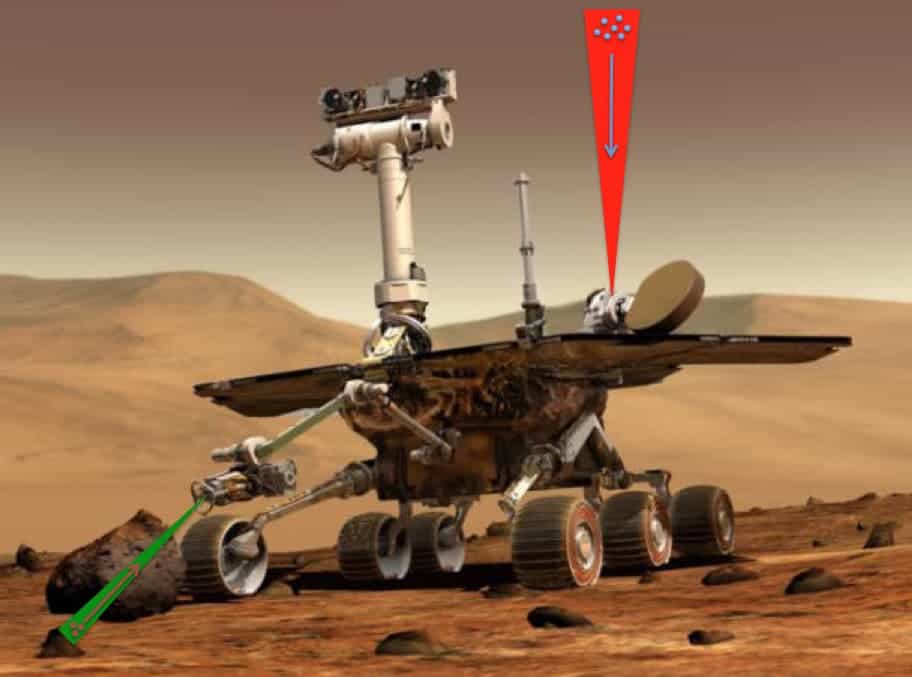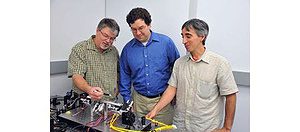
NASA is studying different techniques for corralling particles and transporting them via laser light to instruments on rovers and orbiting spacecraft. (c) Dr. Paul Stysley
Trekkies might rejoice at the news that NASA has recently decided to fund a research group employed to study how tractor beam technology might become applicable in space exploration missions. The agency has awarded a $100,000 initial grant to a team of reserachers who will study three experimental techniques involving capturing small-particle samples with lasers.
“Though a mainstay in science fiction, and Star Trek in particular, laser-based trapping isn’t fanciful or beyond current technological know-how,” says Paul Stysley, part of the team researching tractor beam possibilities.
“The original thought was that we could use tractor beams for cleaning up orbital debris. But to pull something that huge would be almost impossible – at least now. That’s when it bubbled up that perhaps we could use the same approach for sample collection.”

ser experts (from left to right) Barry Coyle, Paul Stysley, and Demetrios Poulios have won NASA funding to study advanced technologies for collecting extraterrestrial particle samples. (c) NASA
One of the three studied techniques involved using what’s called ‘optical tweezers’. This method uses two counter-propagating beams of light, which outputs a ring-like geometry capable of pulling particles inside the dark core of the overlapping beams. Changing the intensity of one beam heats air around trapped particles and can cause them to travel toward a probe, however for this to work the technique requires an atmosphere. Not a problem if applied to Mars missions, though.
Rovers employed so far on the surface of Mars using a drill to probe samples or soil, however this requires a lot of time and the drill is constantly subjected to wear, and thus malfunctioning. A laser could prove to be a more interesting alternative – pointed towards various minerals, it would zap them and use its tractor beam to bring in the particles to the probe for analysis. Laser beams shot through the atmosphere could also provide valuable information on how gases change in response to day-night cycles on Mars.
For deep space missions, where the medium is vacuum, the researchers are considering a technique that employs optical solenoid beams, whose intensity peaks spiral around the axis of propagation, creating a force that pulls particles back along the entire beam of light. The main advantage with this method is that solenoid beams are capable of pulling in material from far away, which would be useful for satellites orbiting high above a comet or asteroid.
The third technique involves a Bessel beam and, so far, only exists in theoretical status, as of yet to be demonstrated in the lab. Bessel beams generate rings of light unto a contact surface, unlike a regular laser which casts a simple dot. These rings are thought to induce electric and magnetic fields in the path of an object, enough to trap and transport particle samples.
“We want to make sure we thoroughly understand these methods. We have hope that one of these will work for our purposes,” says team member Barry Coyle.
“We’re at the starting gate on this. This is a new application that no one has claimed yet.”









